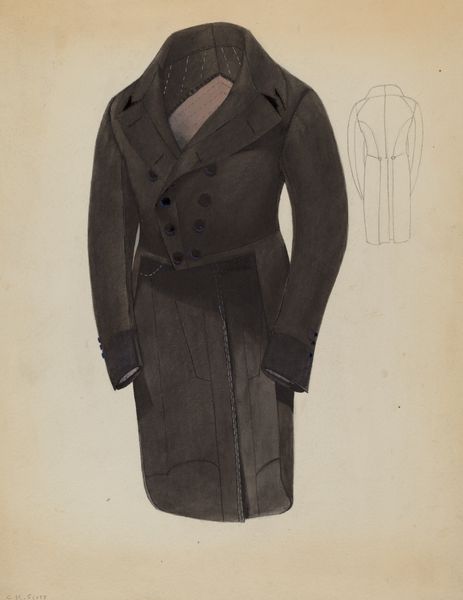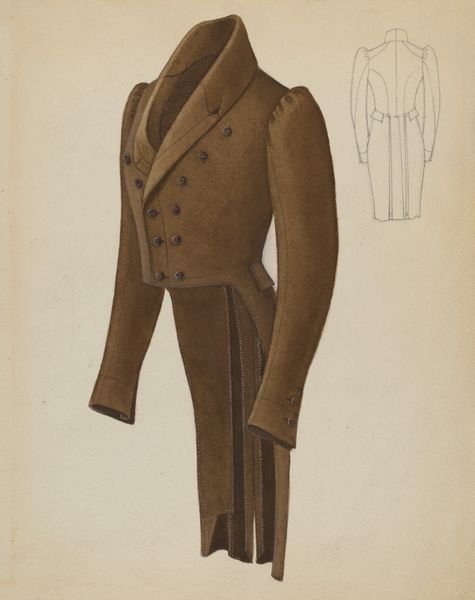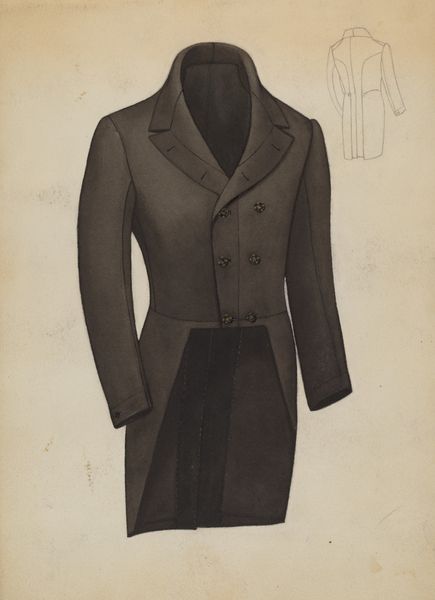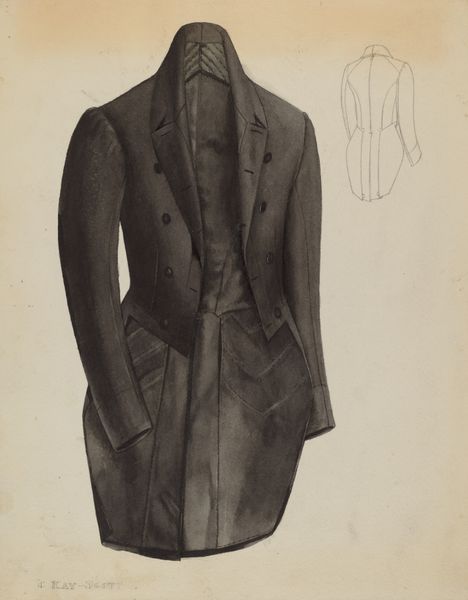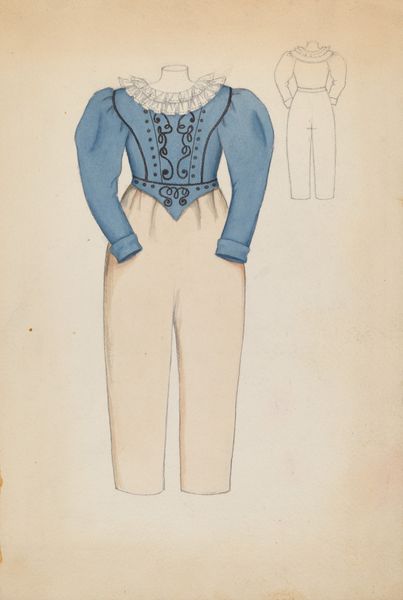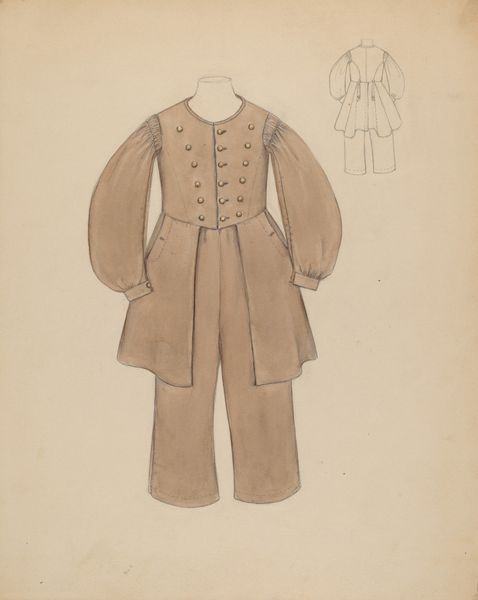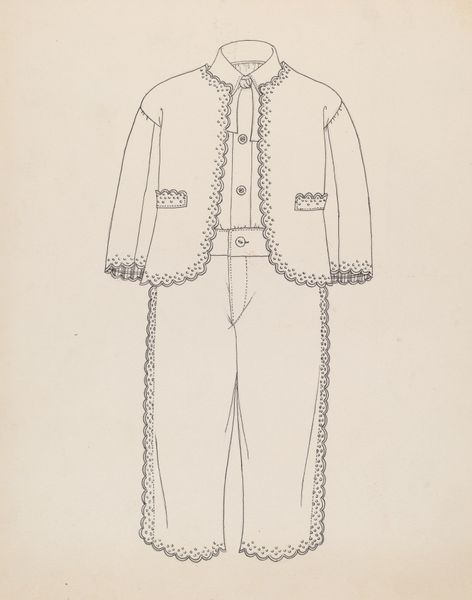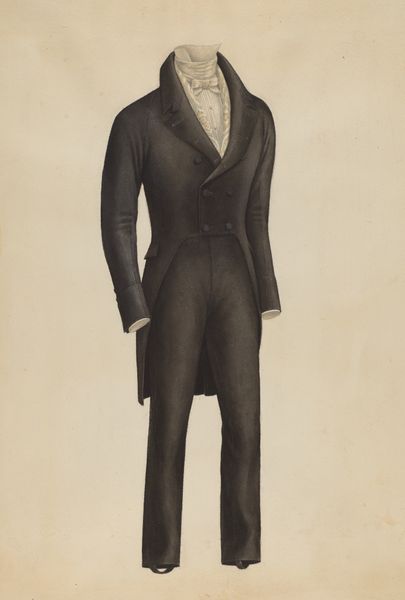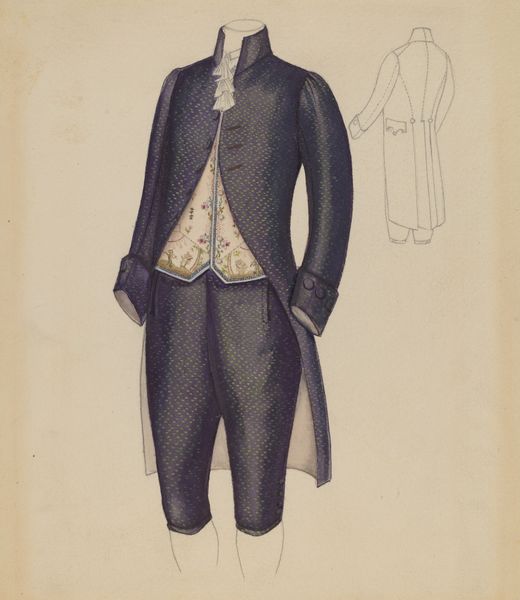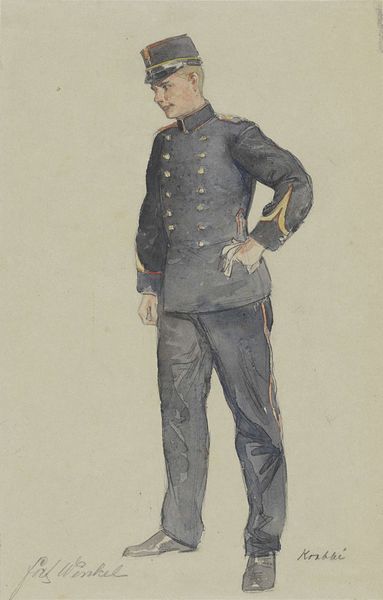
drawing, mixed-media, graphite
#
portrait
#
fashion design
#
drawing
#
mixed-media
#
toned paper
#
light pencil work
#
male fashion
#
fashion mockup
#
historical fashion
#
wearable design
#
graphite
#
clothing photo
#
fashion sketch
#
clothing design
Dimensions: overall: 29 x 22.5 cm (11 7/16 x 8 7/8 in.) Original IAD Object: length of waist front: 17 1/4"; back: 18 1/2"; waist: 35"
Copyright: National Gallery of Art: CC0 1.0
Curator: At first glance, there’s a somber quality to this rendering; it's predominantly dark, almost stark. The details seem precise, yet it has this unfinished, almost ghostly echo of a figure traced in the background. Editor: This mixed-media drawing, called "Tail Coat," comes to us from Creighton Kay-Scott around 1937. The visible graphite and the toned paper—combined with its subject matter—open up a fascinating look at material culture. Curator: Exactly! The use of graphite really draws attention to the texture of the fabric, suggesting quality but also the labor that would have gone into crafting it. You get a sense of both the garment's materiality and the social hierarchy it represents. The crisp collar and perfect double-breasted tailoring implies that the production of luxury items like this demanded particular specialized and skilled labor. Editor: I see that, but also, let’s consider who was *wearing* that tail coat. The 1930s were turbulent. While some clung to old symbols of class and status, many others were deeply impacted by depression era politics. This garment speaks volumes about the intersection of privilege, identity, and access in a world rapidly changing because of massive inequalities. Curator: That's a crucial point. What this drawing allows us to think about are the means of reproducing a certain kind of visual, and the access to participate in this system of fashion and representation. Toned paper suggests the economical and time resources dedicated to create this. And we must not overlook the purpose of drawing fashion in that moment: it’s at the threshold between handcrafted object and industrialized garment production. Editor: Right, and looking closely, one also sees a subtle critique in the choice to only depict the *coat.* By detaching the garment from the wearer, Kay-Scott highlights how clothing can act as both armor and constraint and may interrogate masculinity norms within those decades. Are we looking at a study on sartorial power or the weight of expectation? Curator: Perhaps a bit of both? Ultimately, looking at it today, this “Tail Coat” provokes a great number of discussions, ranging from production methods and their accessibility to questions regarding its socioeconomic representation. Editor: I agree, there are indeed many relevant lenses for interpreting it. Thank you for sharing such compelling insight!
Comments
No comments
Be the first to comment and join the conversation on the ultimate creative platform.
